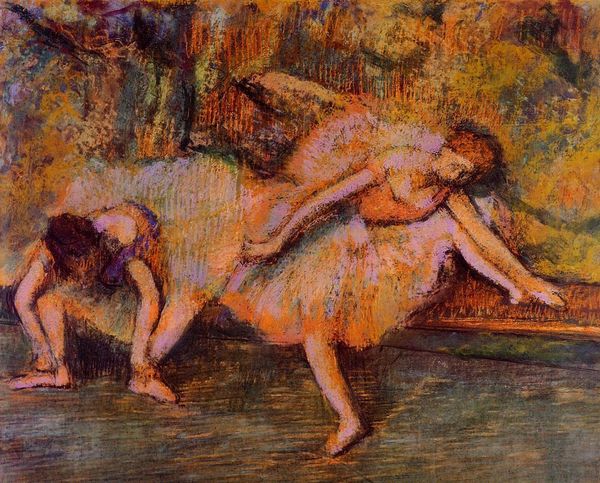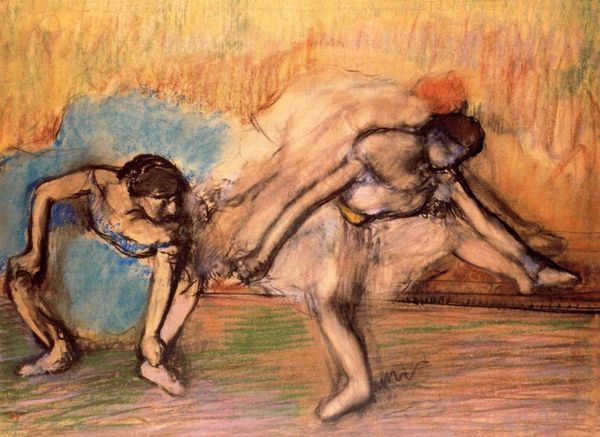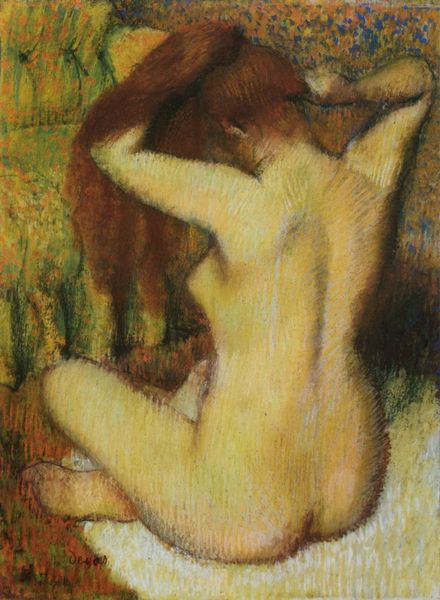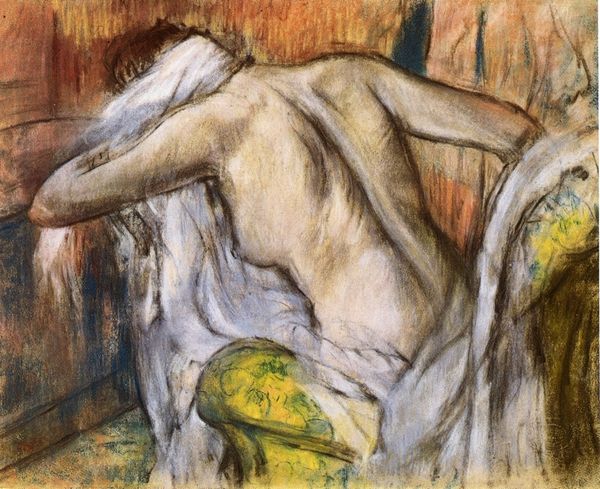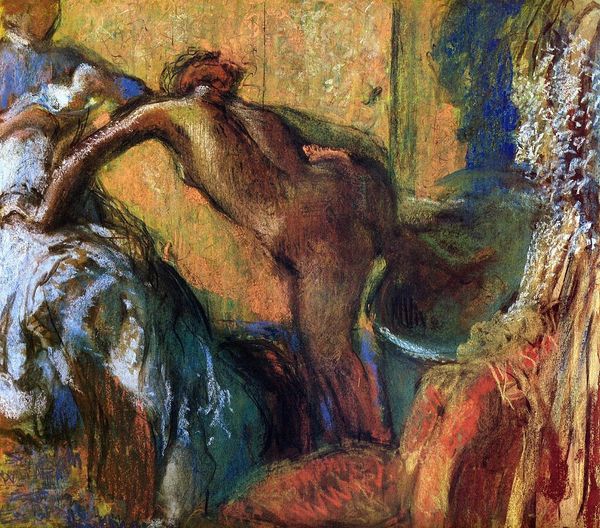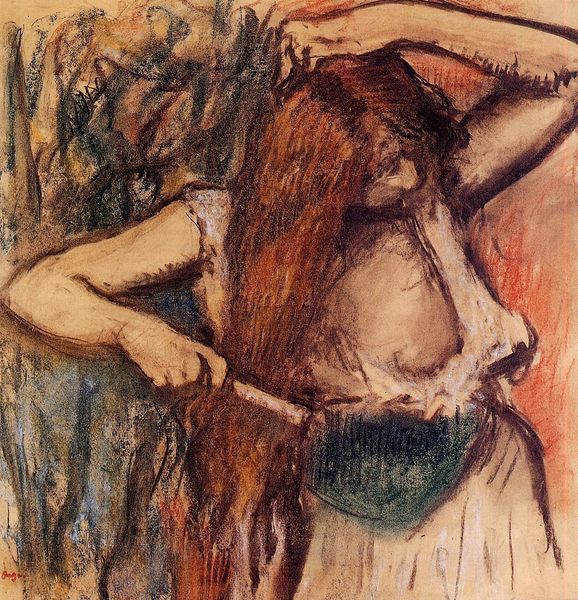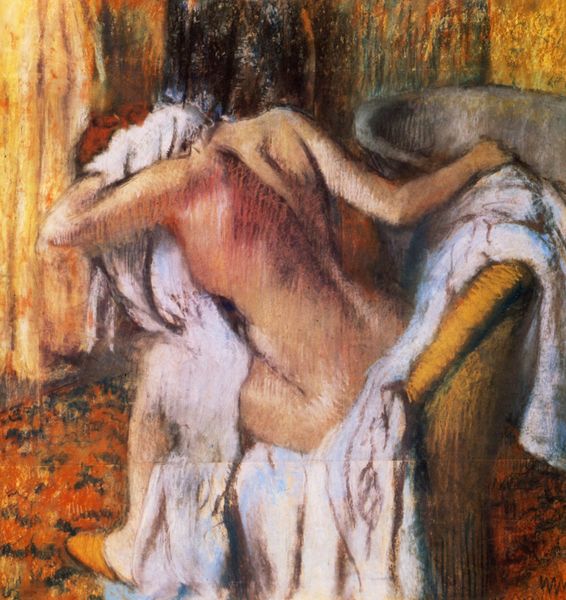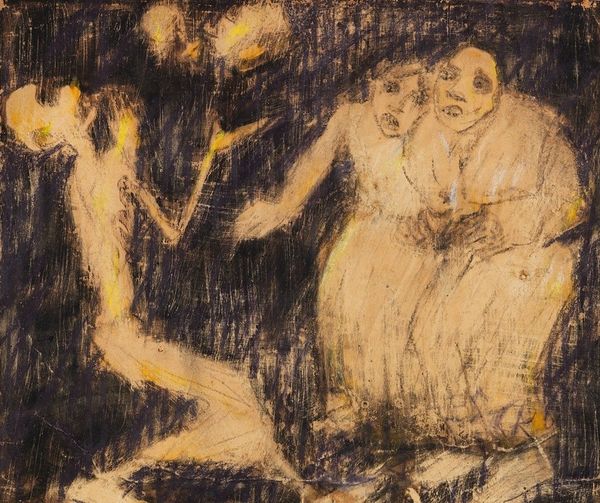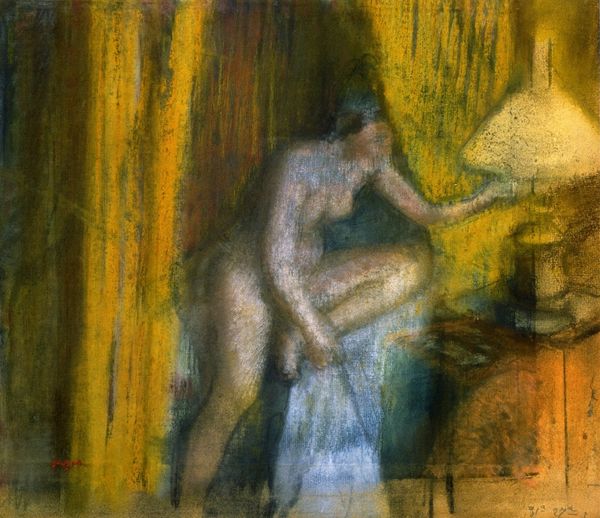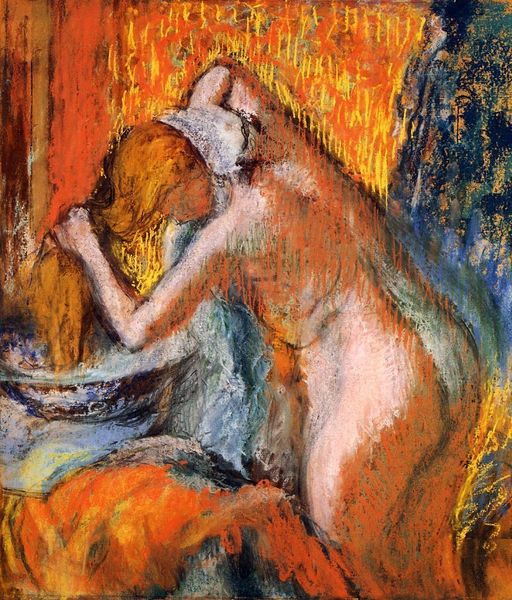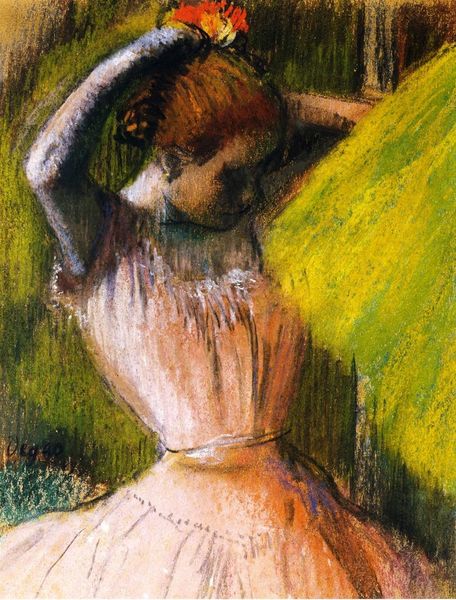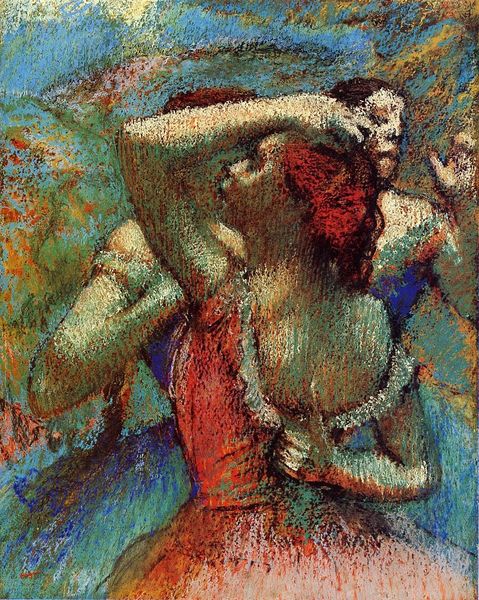
drawing, pastel
#
portrait
#
drawing
#
impressionism
#
figuration
#
genre-painting
#
pastel
Copyright: Public domain
Curator: Here we have Edgar Degas's pastel drawing "Two Dancers at Rest". The scene captures a fleeting moment of respite, bathed in a soft, almost ethereal light. Editor: The overall mood is strikingly melancholy. I see these dancers draped in what look like vivid yellow-green tutus. But despite the splash of color, they appear weary, burdened by the demands of their profession. Curator: Indeed. And this very impression of tiredness or tension shows how the material he’s working with comes to bear: he’s applying layers of pigment to build up form. Note how his loose rendering hints at a behind-the-scenes glimpse, far removed from the glamour of the stage. We catch them unposed, their physicality evident and almost raw. It really brings us closer to labor, which seems at odds with a leisure culture supposedly aimed at consumption. Editor: Yes, but what a sensitive rendering of human form. The contrast in their poses…one bent over in exhaustion, the other stretching as though attempting to shake off the fatigue... it’s almost a mirror. The textures are remarkable for their tactile quality as well. It feels like you could reach out and touch the rough fabric of their costumes. Curator: I am so intrigued by this exploration into posture and form, too. He truly draws upon his keen interest in Japanese prints, exploring this interest via an asymmetrical composition and a unique cropping of the figures, drawing our attention to these very modern concerns with visual presentation. Editor: I wonder, too, about his specific choices regarding the women. The labor of ballet requires not only dedication but specific forms of self-discipline and bodily modifications. And in so many depictions from this period—especially those like Degas, showing practice—we often receive these intimate, casual perspectives. What should be made of the casual presentation, of this peek backstage? Curator: Fascinating questions! For me, these dancers embody a certain resilience—their bodies speaking volumes about their dedication and inner lives. But their labor is very literally that which can be bought. And these factors play out through the material means: Degas employs layered applications and visible textures to hint at this larger dance. Editor: Right. He uses material and labor not merely to represent ballet but to open up an entire world of labor and bodies for speculation and debate.
Comments
No comments
Be the first to comment and join the conversation on the ultimate creative platform.
